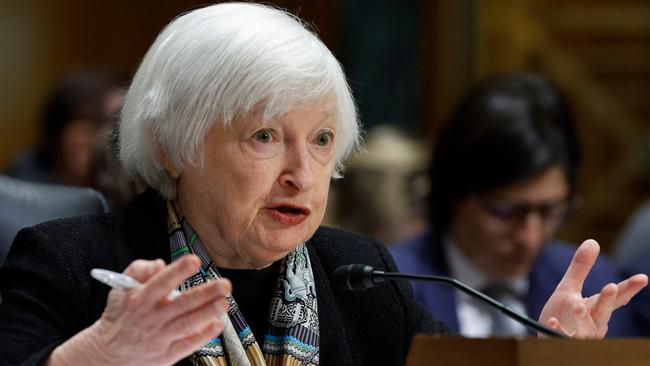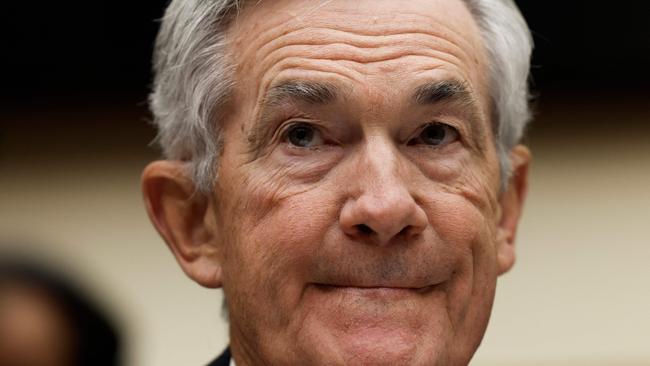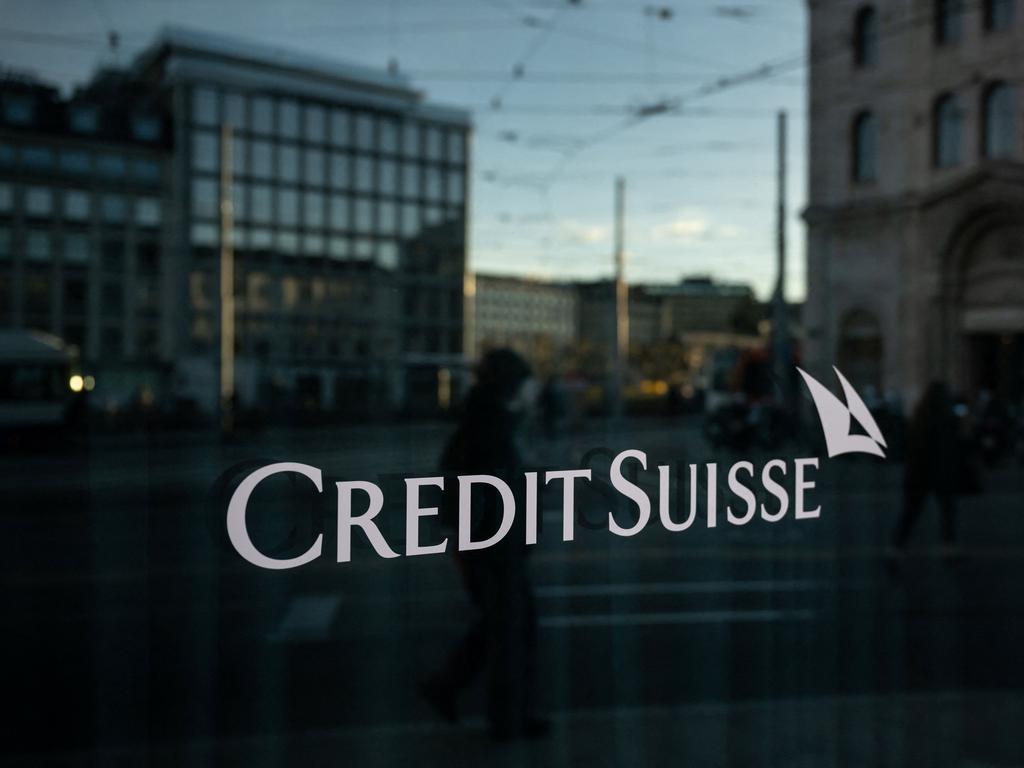ECB hikes rates despite mounting banking stress
ECB president Christine Lagarde stressed ‘it’s not business as usual’ with the bank not able to determine the path going forward.

The European Central Bank raised interest rates by a half-percentage point while promising emergency support for eurozone banks if needed.
The move underscores the policy makers’ balancing act as they seek to combat high inflation without aggravating strains in the financial system.
The ECB said in a statement that it would increase its key rate to 3 per cent, following consecutive half-point rate increases in February and December.
The 50 basis-point rise surprised analysts who had expected a smaller uptick given the tense market situation after the collapse of Silicon Valley Bank, Signature Bank and the problems of Credit Suisse. Overnight, major US banks rescued First Republic Bank with a $US30bn injection.
At a news conference, ECB President Christine Lagarde signalled the bank would be cautious about further rate increases, while stressing it stood ready to provide fresh liquidity to banks. Policy makers will make future rate decisions based on coming economic data, she said, a change from previously announcing plans for rate increases months in advance.
“It’s not business as usual,” Ms Lagarde said. “It is not possible at this point in time … to determine what the path will be going forward.”
European stock markets rallied while government bonds gyrated following the announcements. Analysts said the moves suggested interest rates would be lower than expected, with markets now pricing a peak ECB rate just above 3 per cent, down from about 4 per cent one week ago.
The ECB’s decision provides an early glimpse into how major central banks, including the Federal Reserve, might respond to recent signs of market distress that started with the collapse of SVB and Signature Bank last week.
Both the Fed and Bank of England are set to hold their policy meetings next week.
Ms Lagarde said the ECB was “monitoring current market tensions closely and stands ready to respond as necessary.” She said that eurozone banks had strong capital and solid liquidity positions, and that the ECB had the tools to supply additional liquidity if needed. Analysts said the ECB could provide new long-term loans to banks or activate foreign-exchange swap lines with overseas central banks.

The problems at Credit Suisse “serve as a reminder that as interest rates rise, vulnerabilities are lurking in the financial system,” said Neil Shearing, chief economist at Capital Economics. Key areas to monitor are smaller European banks and shadow banks, particularly open-ended funds, Mr Shearing said.
Analysts said the ECB’s decision increased the possibility the Fed could boost US interest rates by a quarter-percentage point at its rate-setting meeting on March 21-22, depending on the status of bank-related financial pressures.
The federal-funds rate is currently between 4.5 per cent and 4.75 per cent.
“The ECB 50 makes us a bit more confident … that the Fed will go ahead with 25 [basis points] next week,” said Krishna Guha, vice chairman at Evercore ISI, in a client note. “Events are highly dynamic, the Fed does not have to make that call now, and if banking instability intensifies into the Fed meeting it would still decide to take a one-meeting time-out.”
The ECB decision to push ahead with its pre-announced rate rise suggests that the central bank, at least, still sees pushing down high and sticky inflation in the eurozone as its priority. Analysts pointed to the lack of guidance in the statement as a signal that the central bank could shift to less aggressive monetary policy should the market turbulence persist.
“They’re in a very difficult spot trying to balance monetary policy with financial stability,” said Rohan Khanna, a rates strategist at UBS.
“Even though core inflation is accelerating higher, the fact is that the banking system’s instability is likely making them unwilling to comment on the future pace [of rate increases].” Many investors were surprised by the increase given how last week’s turmoil in the US banking sector has begun spreading to Europe.
“I was expecting [0.25 percentage point] but I get why they did this. They don’t want to give the impression that something is wrong,” said Fahad Kamal, chief investment officer at Kleinwort Hambros.
Investors have repriced policy rates and sovereign-bond yields over the past week, signalling a rapid shift in expectations about the direction of future monetary policy.

They are betting that the recent bout of market turmoil could be a turning point for central banks, underscoring the obstacles central banks are facing as they try to bring down inflation.
What happens next will depend heavily on whether the market turbulence subsides or not, analysts said.
Even before the collapse of SVB sent ripples across markets last week, Ms Lagarde was facing a tricky balancing act as the central bank tightened monetary policy to fight inflation.
Like a doctor watching for serious side effects when administering heavy medication, the ECB had to raise rates while taking care not to cause a recession in the currency bloc and destabilise its most indebted nations, whose borrowing costs have rocketed.
Now another adverse reaction to monetary tightening has emerged: Central banks’ rapid rate increases over the past year haven’t just weighed on borrowing and economic growth, they have also depressed the value of the bond portfolios commercial banks had been holding, a toxic combination for some lenders.
European stock markets rallied after Credit Suisse said it would borrow up to 50 billion Swiss francs, equivalent to $US53.6bn, from the Swiss central bank to shore up its liquidity.
For now, business surveys point to weak growth in the eurozone this year amid declining energy prices and government spending, and the reopening of China’s economy.
The eurozone’s economy could struggle later this year, particularly if heightened concerns around the banking sector weigh on lending, analysts said.
Underlying inflation in the eurozone increased to a record of 5.6 per cent in February, even as in the US it declined to 5.5 per cent for the same period.
Ms Lagarde warned that inflation was projected to remain too high for too long. She noted that if the bank’s baseline economic forecast plays out, there is “more ground to cover,” adding that the baseline doesn’t include recent financial market tensions. Those are likely to weigh on growth and inflation.
With Nick Timiraos
-The Wall Street Journal





To join the conversation, please log in. Don't have an account? Register
Join the conversation, you are commenting as Logout